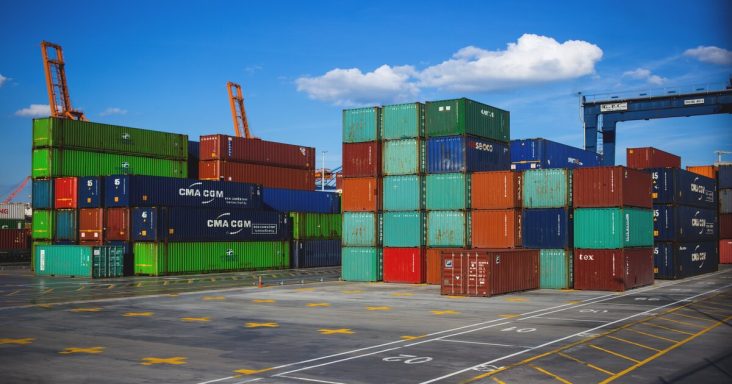Port strike likely to disrupt supply chain, could cause inflation
by October 1, 2024 4:58 pm 463 views

Retailers import a significant amount through ports paralyzed by the strike of longshoremen who walked off their jobs at 14 ports from Maine to Houston on Tuesday (Oct. 1). A strike won’t hurt holiday sales, but could be a broader supply chain problem if it continues.
Steve Lamar, CEO of the American Apparel & Footwear Association, said the ports are critical for the retailing industry. Last year, the East and Gulf Coast ports accounted for 53% of all U.S. apparel, footwear and accessories imports amounting to more than $92 billion in value, he said.
Walmart reportedly imported 47,700 containers through the impacted ports from September 2023 through September 2024. Home Depot imported 21,200 containers, Dollar General’s container imports totaled 11,000 and Amazon imported 9,000 containers in the same period through the ports now under strike.
Dana Telsey, CEO of Telsey Advisors, said apparel retailers and big box operators brought in goods early in anticipation of the strike. She said lessons learned from 2020 pushed them to be proactive. Telsey said if the strike is resolved soon there would be little impact on consumer prices and inventory levels. But if the strike drags on for several weeks, it will be a major headwind for retailers in rising shipping costs and eventually higher prices for consumers, perhaps pushing inflation back up.
She said supply chain disruptions raise the cost of doing business at a time when many retailers are already treading water.
Kevin Williamson, CEO of RJW, which moves goods in the retail sector, estimates most packaged foods and consumable companies have anywhere from 8 to 16 weeks of inventory, but if the strike drags on their manufacturing operations would be disrupted without key ingredients from Europe. Williamson said grocery is is impacted because ingredients like olive oil and fruit are sourced from Europe through the East Coast ports.
‘SELF-INFLICTED WOUND’
Matthew Shay, CEO of the National Retail Federation, said there will be a ripple effect for retailers and holiday sales, and the shutdown could take the supply chain months to recover
“Though many retailers have worked months in advance to mitigate the impact of any slowdown through measures such as rerouting goods toward West Coast ports, NRF has urged the White House to use all available options to limit the impact of the strike. We’re finally turning the corner on inflation, we know that the job market and the overall economic activity have moderated from the highs over the last several years, and this is the last thing we need as a self-inflicted wound as we go into the fourth quarter of the year,” Shay said.
Costco CEO Ron Vachris said a limited amount of food and sundries arrive via cargo shipments, and its imports are primarily non-food items. He said Costco has contingency plans in place and ordered holiday items in advance. The retailer also could look at moving goods to different ports. Costco said contracts have locked in freight rates for now, but if a disruption does take place those prices could go up.
Walmart echoed that sentiment.
“We prepare for unforeseen disruptions in our supply chain and maintain additional sources of supply to ensure we have key products available for our customers when and how they want them,” Walmart spokeswoman Blair Crowell noted in an email.
AUTO, PHARMA ISSUES
Adam Kamins, an economist at Moody’s Analytics, estimated the strike could have a financial impact of approximately $2 billion a day. He based that analysis on the number of goods flowing through their ports daily. He said the longer the ports stay closed the more dire the implications for the overall U.S. economy.
He said the most significant issues will be in the food and automobile industries that rely heavily on the impacted ports. If the strike drags on, Kamins expects prices will increase, feeding inflationary pressures again. Another industry that could be impacted by a lengthy strike is pharmaceutical who largely use the East Coast ports to ship generic drugs and active pharma ingredients to the U.S. from India. He said without the active pharma ingredients the drugs can not be produced in the U.S.
Analysts at Sea Intelligence estimate the East Coast ports would handle 2.3 million containers in October. That translates to 74,000 shipping per day. The value of that daily freight is around $3.7 billion based on a MDS Transmodal estimate of $50,000 per container. The analysts estimate a one-day strike would take five days to clear. A week-long strike cause disruptions until mid-November.
The strike comes on the heels of Hurricane Helene that delayed port operations in Charleston and Savanah, as well as power losses at intermodal facilities across the southeast. This event created ocean, trucking and rail carrier congestion across the Southeast and Gulf ports.
The Conference Board estimates a week-long strike could cost the U.S. economy $3.78 billion. The shuttered ports handle $3 trillion annually in U.S. international trade. An analysis by J.P. Morgan estimated the daily cost of a port strike by East and Gulf Coast port workers would cost the U.S. economy between $3.8 billion and $4.5 billion per day as operations slow.
